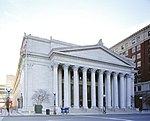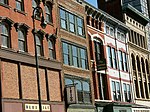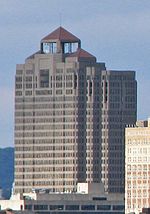The Institute Library (New Haven)
1826 establishments in ConnecticutBuildings and structures in New Haven, ConnecticutCharities based in ConnecticutLibraries in New Haven County, ConnecticutSubscription libraries in the United States
The Institute Library (Originally established as the New Haven Young Men's Institute, and sometimes called the Young Men's Institute Library) is a membership library in New Haven, Connecticut. Founded in 1826 in the tradition of Mechanics' Institutes, it is New Haven's oldest community library and one of the few membership libraries now remaining in North America. The organization was active during the 19th century as a center for lectures, debates, and classes in New Haven.
Excerpt from the Wikipedia article The Institute Library (New Haven) (License: CC BY-SA 3.0, Authors).The Institute Library (New Haven)
Court Street, New Haven
Geographical coordinates (GPS) Address Nearby Places Show on map
Geographical coordinates (GPS)
| Latitude | Longitude |
|---|---|
| N 41.3059 ° | E -72.9252 ° |
Address
Ninth Square Historic District
Court Street
06511 New Haven
Connecticut, United States
Open on Google Maps








